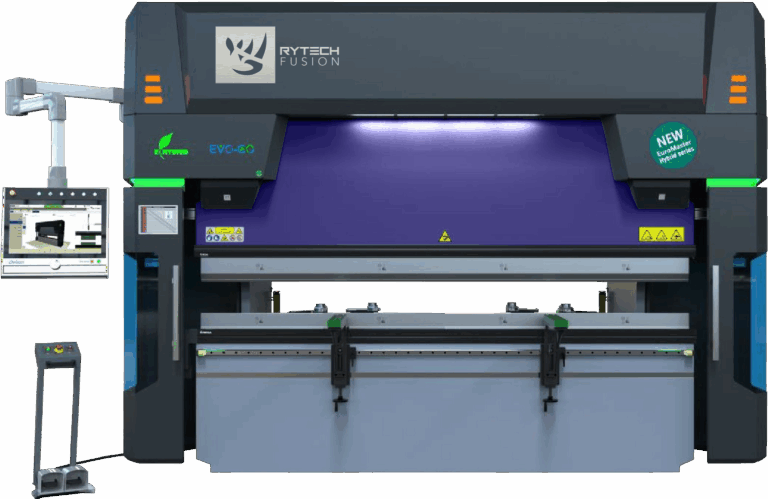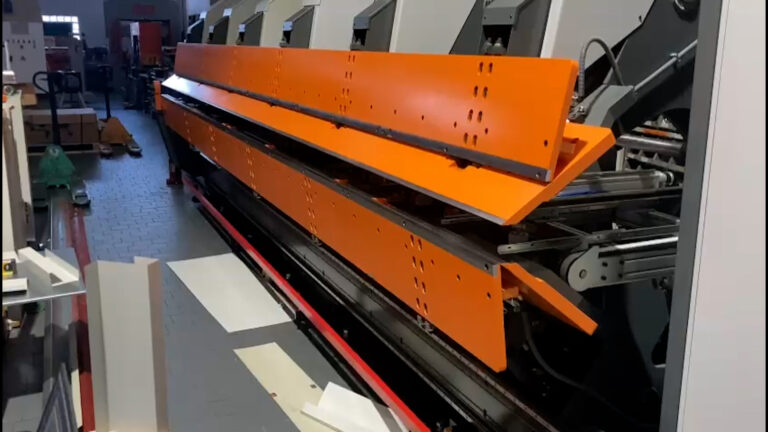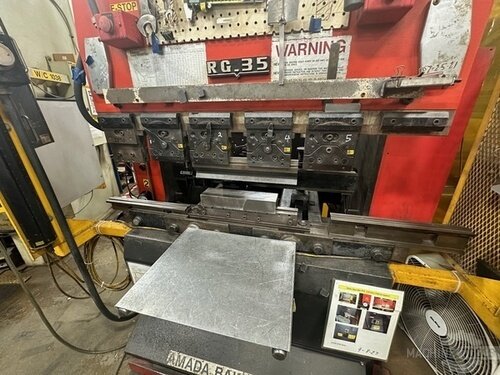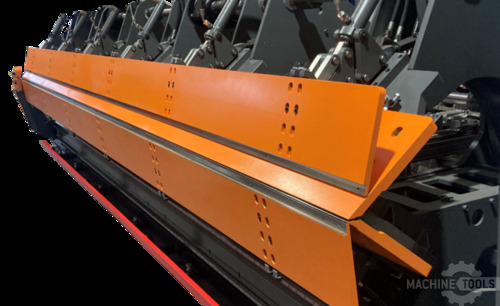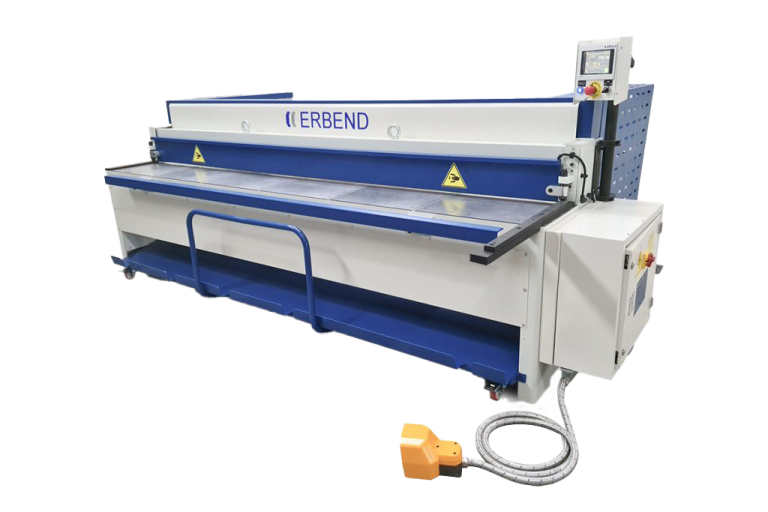For over three decades, I’ve had the privilege of working shoulder-to-shoulder with fabricators and metal roofers, starting on the south side of Chicago and now proudly serving as Regional Sales Executive at Mac-Tech. My journey has always centered on one thing: putting the customer first—whether that’s troubleshooting a press brake at midnight or helping a shop floor manager spec out a new coil line. Every day, I help businesses across the country—from family-run roofing outfits to high-volume OEMs—navigate the ever-evolving world of sheet metal machinery, ensuring each investment delivers maximum value in precision, throughput, and ROI.
Leveraging Decades of Experience to Optimize Sheet Metal Precision
Sheet metal fabrication isn’t just about bending metal—it’s about delivering the tightest tolerances, consistent quality, and minimal waste, all while meeting deadlines and managing labor costs. The decision between CNC folders and press brakes is pivotal, especially as material costs rise and production demands accelerate. Having seen both technologies evolve, I’ve helped countless shops weigh their options, matching machine capabilities with unique production requirements.
Understanding the Demands of Modern Coil-Fed Production
Today’s coil-fed lines demand more than brute force—they require smart automation, seamless integration, and adaptability. Whether you’re slitting, forming, folding, or running a decoiler, the push is always toward higher throughput with less manual intervention. Modern CNC folders and press brakes have both come a long way, but their roles in a coil-fed environment differ:
- Folders excel at handling long, thin panels with minimal marking, often directly from coil. Their programmable automation reduces setup time and labor.
- Press Brakes are the go-to for heavier gauges, complex geometries, and versatile forming—but typically require more skilled operators and manual handling.
Understanding these operational contexts is vital to maximizing precision and efficiency on your shop floor.
Evaluating CNC Folders and Press Brakes: Key Differences in Efficiency and Waste Reduction
When comparing CNC folders and press brakes, several distinctions stand out:
1. Setup and Changeover:
CNC folders offer rapid, automated setup—ideal for short runs and frequent changeovers. Press brakes, while flexible, can be slower to retool, especially for varied part profiles.
2. Labor Requirements:
Folders typically need fewer operators and allow for more ergonomic loading/unloading. Press brakes often demand skilled labor, especially for tight-tolerance work.
3. Material Handling and Marking:
Folders bend around the material, minimizing surface scratches and damage—critical for pre-painted or finished metals. Press brakes, with their die contact, can introduce more marking if not properly managed.
4. Waste and Scrap Reduction:
Folders’ precision and repeatability cut down on rework and scrap, particularly for long parts. Press brakes can achieve similar results, but often with greater operator dependency.
Matching Machine Capabilities to Fabrication Needs: Slitting, Forming, Folding, and Beyond
No two shops are alike. Some require high-speed slitting and shearing, others need versatile forming or advanced folding. My role is to help you identify bottlenecks and match equipment accordingly:
- Shears & Slitters: For rapid coil processing and width control.
- Folders: For long, thin, or delicate panels—especially in architectural roofing and siding.
- Press Brakes: For heavy-duty, multi-bend parts or complex geometries.
- Decoilers & Roll Formers: To feed continuous material and automate panel production.
- Panel Benders & Downspout Machines: For specialized profiles and value-added products.
By mapping your production flow, we can pinpoint the right machine—or combination—for your unique demands.
Real-World Strategies for Upgrading Equipment with Minimal Disruption
Upgrading a key piece of equipment doesn’t have to mean weeks of downtime. Here’s how I guide customers through a smooth transition:
- Staged Implementation: Install new machinery alongside legacy equipment, allowing operators to train and workflows to adjust gradually.
- Pre-Installation Planning: Coordinate electrical, air, and floor space requirements in advance.
- Operator Training: Provide hands-on demos and remote support, minimizing the learning curve.
- Data Integration: Ensure new machines communicate seamlessly with your existing software and controls.
The result? A faster ramp-up, minimal disruption, and immediate productivity gains.
Speed Versus Precision: Finding the Right Balance for Your Production Goals
Shops often ask: “Should I prioritize speed or precision?” The answer depends on your market and margins. Folders can process long, uniform parts with incredible speed and repeatability. Press brakes offer unmatched versatility but may sacrifice throughput for complex jobs. The best approach balances both—using each technology where it shines to meet your quality and delivery targets.
Case Studies: Success Stories in Reducing Waste and Boosting Efficiency
- Midwest Roofing Fabricator: Upgraded from manual press brakes to a servo-driven CNC folder, cutting panel processing time by 40% and reducing scrap by 25%.
- Industrial HVAC Shop: Integrated a combi-beam folder with automated slitter, enabling lights-out production of custom ductwork and freeing up skilled operators for value-added tasks.
- OEM Metal Products Manufacturer: Transitioned to a hybrid line with both press brakes and folders, optimizing batch sizes and reducing lead times by 30%.
Each success story starts with a clear understanding of production goals and a willingness to invest in the right technology.
ERMAKSAN POWER-BEND FALCON BENDING MACHING
Making the Investment: Practical Guidance for Selecting High-Performance Machines
Investing in new machinery is a major decision. Here’s my advice:
- Assess Your Current Workflow: Identify pain points—excessive scrap, bottlenecks, labor shortages.
- Project Future Needs: Consider material types, part sizes, and anticipated volume increases.
- Request Demos and Trials: See machines in action with your own materials.
- Compare Automation Options: Evaluate servo vs. hydraulic, combi-beam vs. double folder, and integration with upstream/downstream equipment.
- Plan for Operator Training: Ensure your team is equipped to maximize ROI from day one.
Above all, partner with a supplier who understands your business and stands behind their products.
Conclusion: Achieving Next-Level Productivity Through Informed Machine Choices
Precision sheet metal fabrication is a moving target, but with the right guidance and equipment, your shop can stay ahead of the curve. At Mac-Tech, we’re committed to helping you navigate the options, from folders and press brakes to slitters, decoilers, panel benders, and beyond. With smart investments and a customer-first approach, you can reduce waste, increase throughput, and deliver the quality your customers demand.
Frequently Asked Questions
When is the right time to upgrade a roll former or folder?
If you’re seeing increased downtime, excessive scrap, or can’t keep up with orders, it’s time to evaluate an upgrade. Also, consider new material specs or product lines—if your current equipment can’t handle them efficiently, an upgrade will pay for itself.
How do servo-driven folders compare to hydraulic systems?
Servo-driven folders offer faster, more precise bends with lower energy consumption and quieter operation. Hydraulics are robust for heavy-duty work, but servos shine in high-mix, high-precision environments where speed and accuracy matter.
What’s the difference between a combi-beam and double folder?
A combi-beam folder can switch between straight and box tooling automatically, increasing flexibility. A double folder bends both up and down without flipping the part, boosting speed and reducing handling—ideal for complex or high-volume jobs.
What are signs a roll forming line is no longer cost-effective?
Frequent breakdowns, rising maintenance costs, inconsistent product quality, and excessive changeover times all indicate it’s time to consider a new line or major upgrade.
How can automation reduce labor costs in sheet metal fabrication?
Automation minimizes manual handling, reduces errors, and allows one operator to oversee multiple machines. This leads to lower labor costs, higher consistency, and the ability to redeploy skilled staff to higher-value tasks.
Can I integrate new equipment with my existing software and controls?
Most modern machines offer open interfaces for easy integration, but it’s crucial to verify compatibility up front. At Mac-Tech, we help you map out integration and provide support every step of the way.
Whether you’re considering your first CNC folder or looking to overhaul your entire production line, I invite you to reach out for a personalized walkthrough, live demo, or a no-obligation upgrade quote. Let’s work together to find the right solution for your business and take your sheet metal operation to the next level. Connect with me directly at pat@mac-tech.com or (414) 232-7929—I look forward to helping you achieve your goals!
Get Weekly Mac-Tech News & Updates




